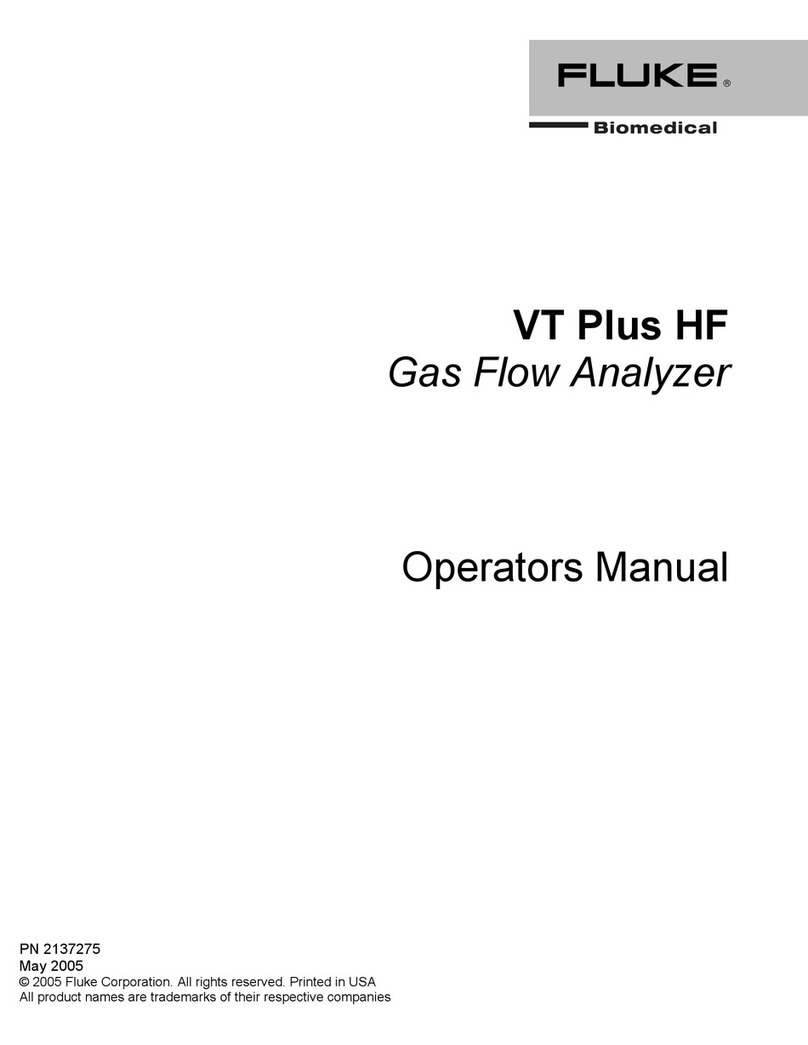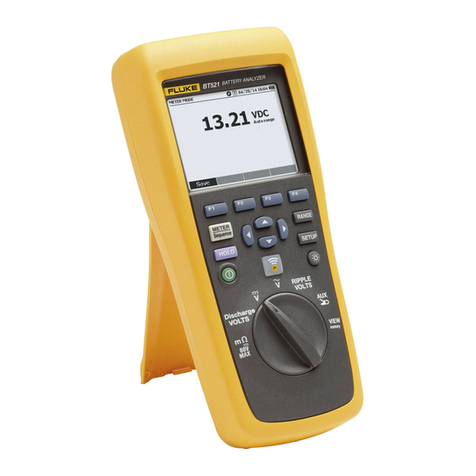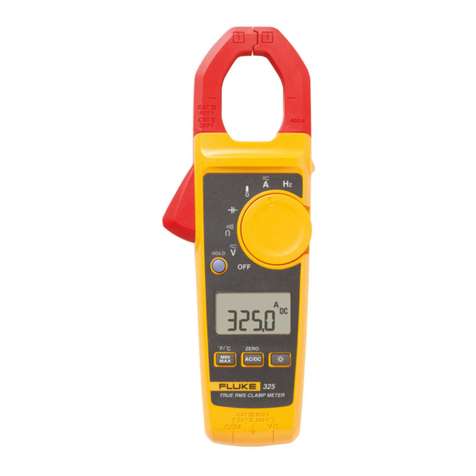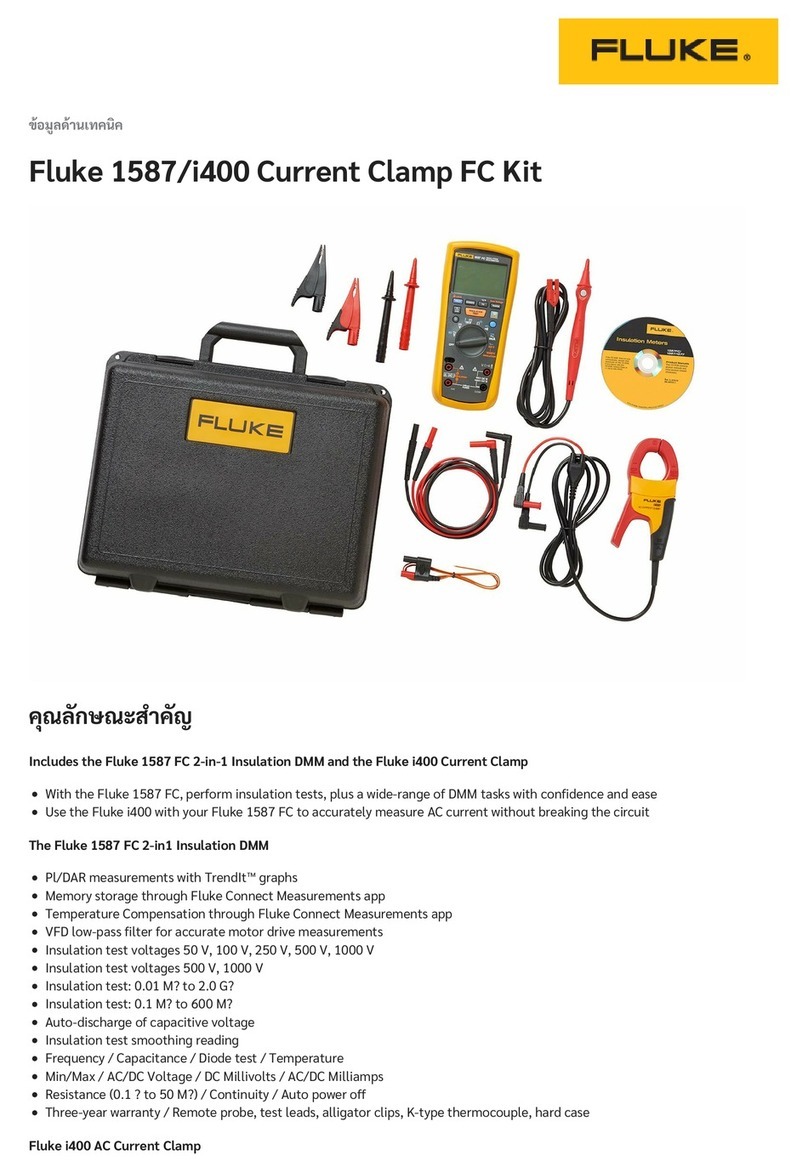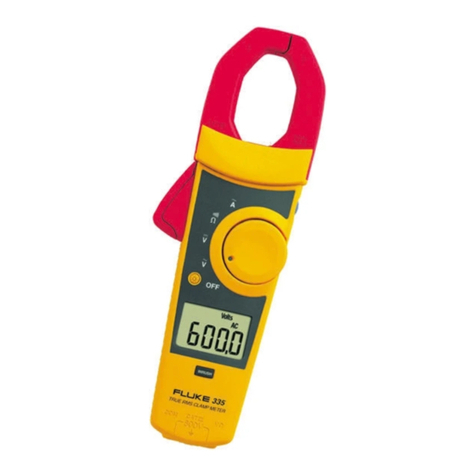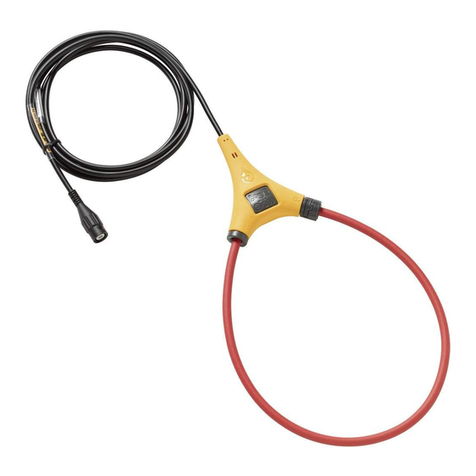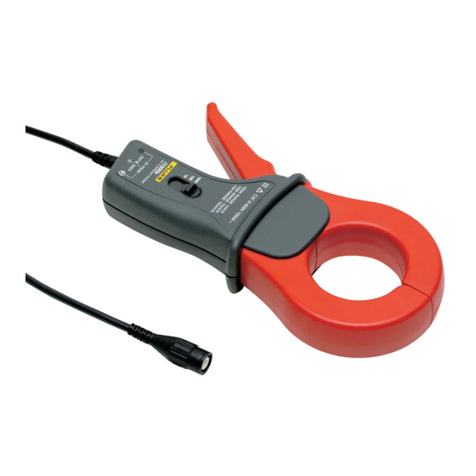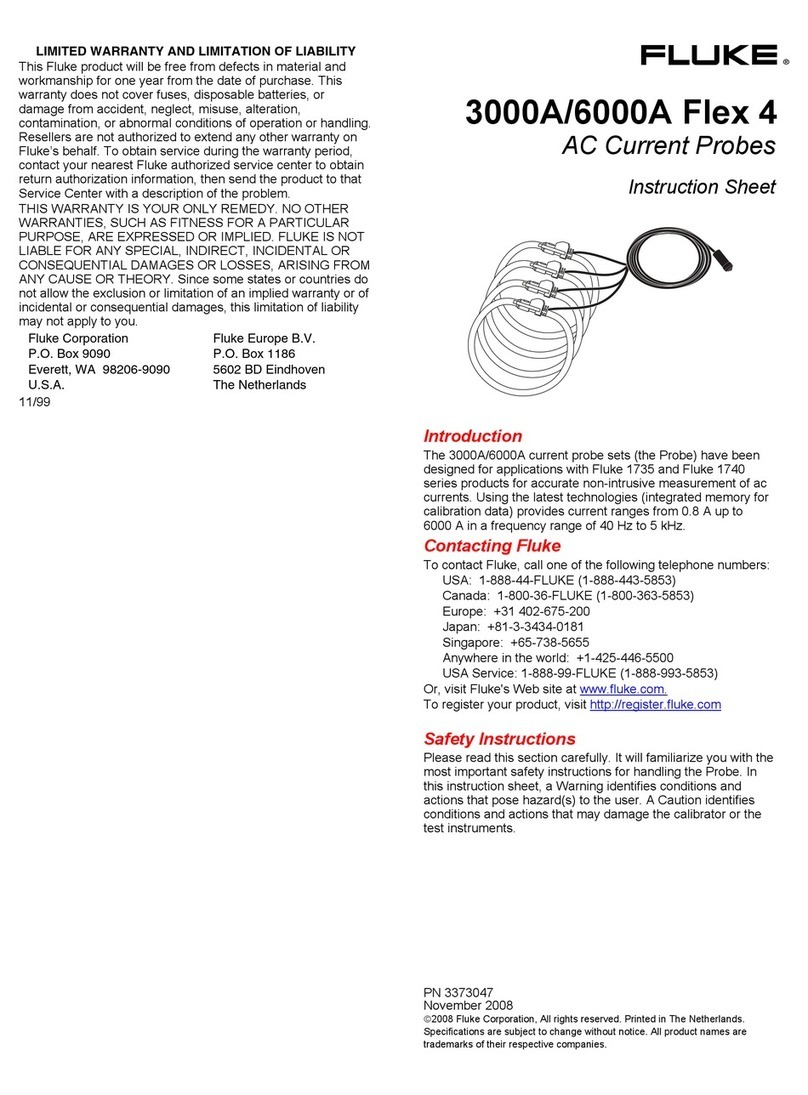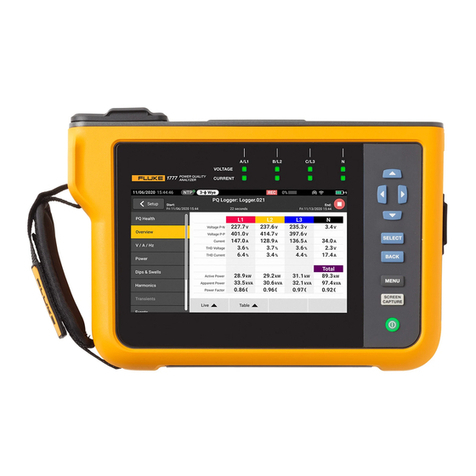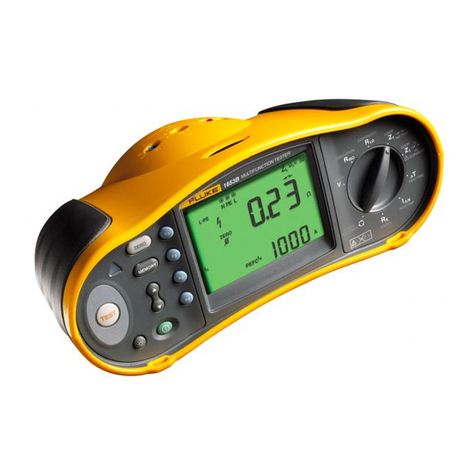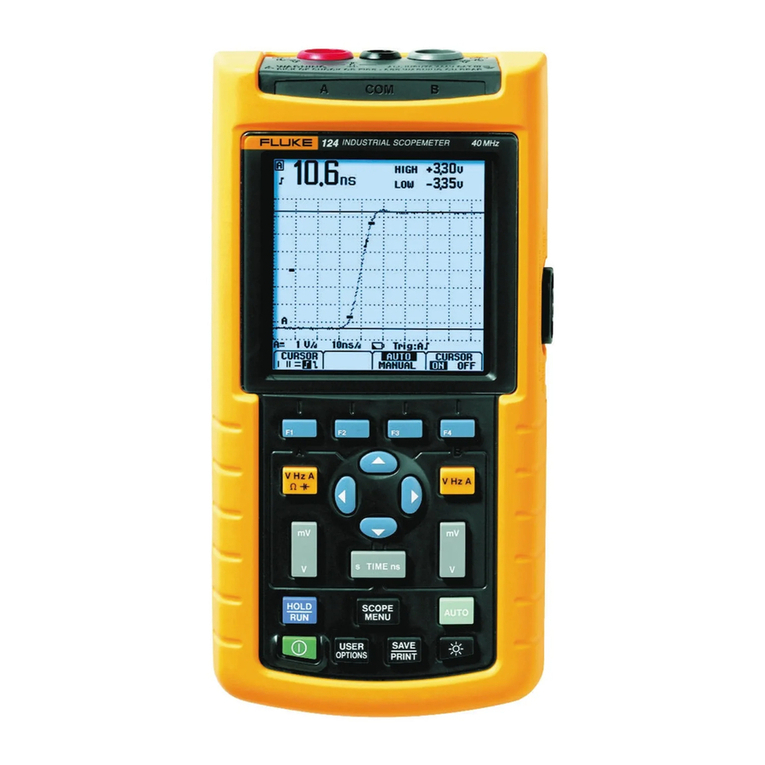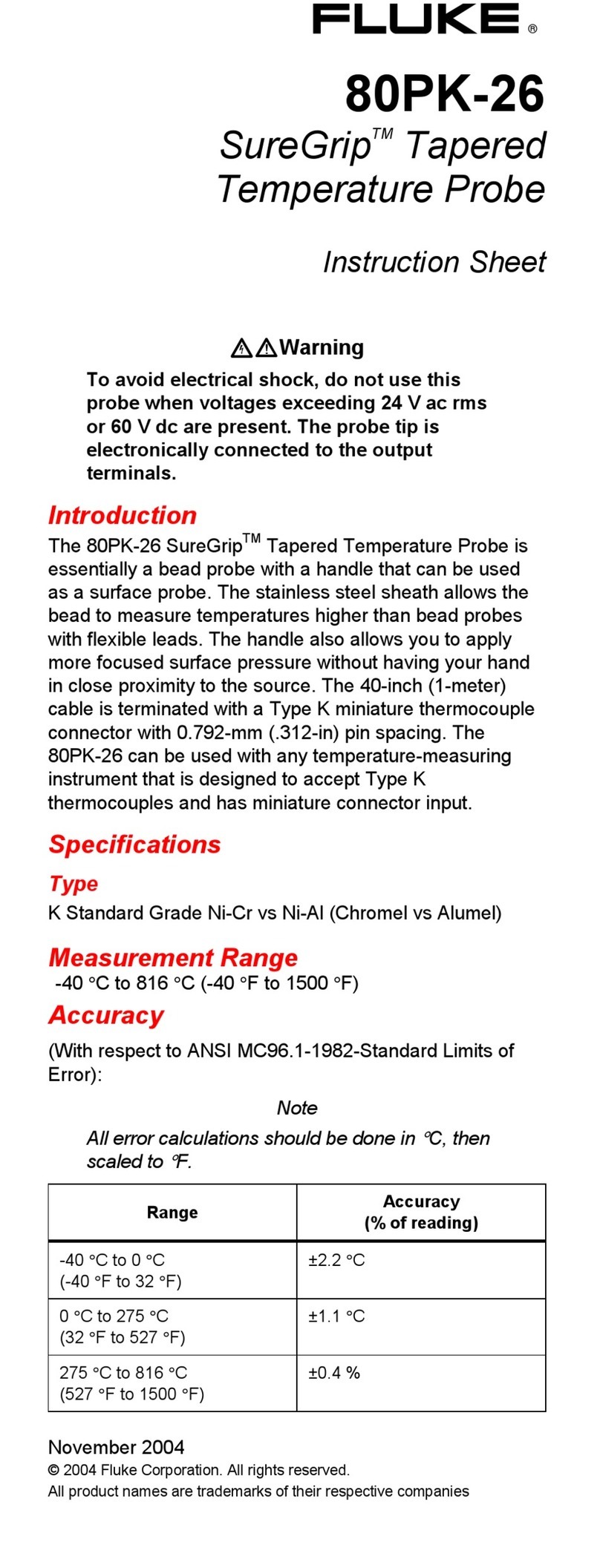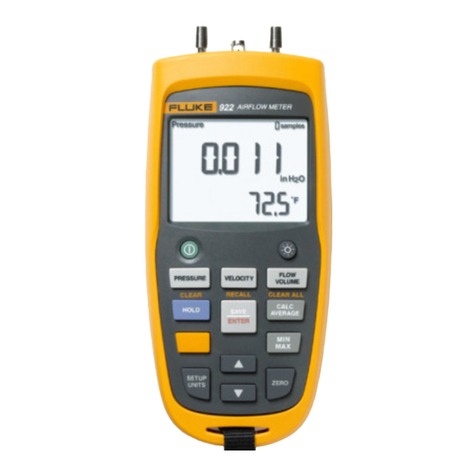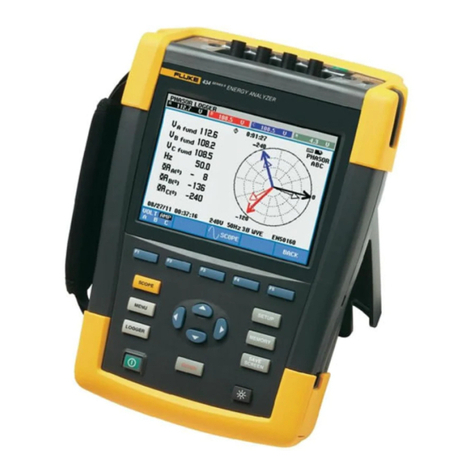
Service Information Sheet for Serial Numbers < 79370000
Cleaning the Optical Connector
3
between the reference current and the signal
current; therefore, the output is a linear function of
the optical power received by the photo detector. A
typical output at U1, pin 7 is 23 mV per dB of
optical power, plus a 69 mV offset
The reference current adjustment potentiometers
R1, R2, and R3 control the zero offset for the three
calibrated wavelengths. Potentiometer R10 trims
the final output slope to 10 mV per dB. The output
of U1B is buffered by U2B. R7 provides
temperature compensation to null some of the
thermal drift of Q1A and Q1B.
Cleaning the Optical Connector
Most problems with optical power meters result
from contaminated connectors. Therefore, always
clean the connector before troubleshooting or
calibration.
To clean the FOM ST connector, wipe it gently
with an optical-grade tissue or swab dampened with
optical-grade alcohol. To remove loose dirt and
dust from the connector, use filtered, compressed
air.
Always cover the connector with a dust cap when
the unit is not in use.
Required Equipment
The following equipment is required for servicing
the FOM:
•0-10 V power supply
•Fluke 187 digital multimeter or equivalent
•Optical power meter calibrated at 850 nm,
1300 nm, and 1550 nm traceable to NIST
Standards
•850 nm laser source; Po = -10 dBm
•1300 nm laser source; Po = -10 dBm
•1550 nm laser source: Po = -10 dBm
•Variable MM optical attenuator
•Variable SM optical attenuator
•Fluke DSP CableMeter test tool
•1 m fiber optic patch cables, 2 required
•2 m UTP patch cable (supplied with the
CableMeter test tool)
Performance Tests
Use the performance tests to confirm that the FOM
is working properly. If the FOM fails any of these
tests, clean the fiber connectors, verify that the
connections are solid, then retest the FOM. If the
FOM still fails a test, it needs calibration
adjustments or repair.
DSP-FOM Detection
1. Turn the CableMeter test tool knob to SETUP.
Use the arrow keys to select TEST
STANDARD, CABLE TYPE; then press
E. Use U D (and Page Up/Page
Down softkeys if necessary) to select the
applicable standard for the DSP-FOM; then
press E. Use the arrow keys to select
Multimode as the cable type; then press
E.
2. With the FOM not connected to the CableMeter
test tool, turn the test tool knob to SINGLE
TEST; then press E. Verify that the
test tool displays the following message:
WARNING THE DSP-FOM IS NOT
CONNECTED. Press Eto continue.
3. With the FOM switch in the OFF position, use
the 2-meter UTP patch cable to connect the
FOM to the CableMeter test tool. Press the test
tool Tkey. Verify that the test tool displays
the following message: WARNING THE
DSP-FOM IS TURNED OFF. Press
Eto continue.
DSP-FOM -10 dBm Checkout
1. Turn on the FOM and the three light sources.
Verify that the FOM power LED is on. Allow
the FOM and the sources to warm up for 10
minutes.
Perform the remaining steps using the light sources
in the following order: (1) 850 nm, (2) 1550 nm,
and (3) 1300 nm.
2. Use a fiber optic patch cable to connect the
light source to the reference power meter.
3. Verify that the reference power meter is
configured to measure the wavelength of the
light source. Adjust the output of the source for
a reading of -10.00 dBm ±0.05 dBm. Record
the power reading for later use.

